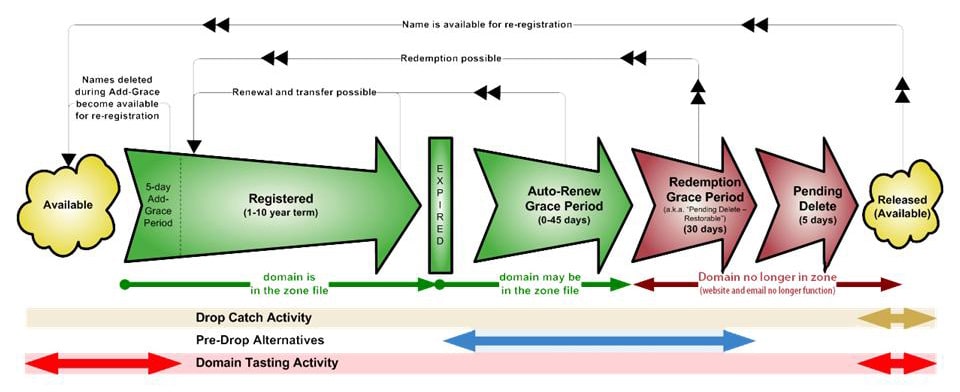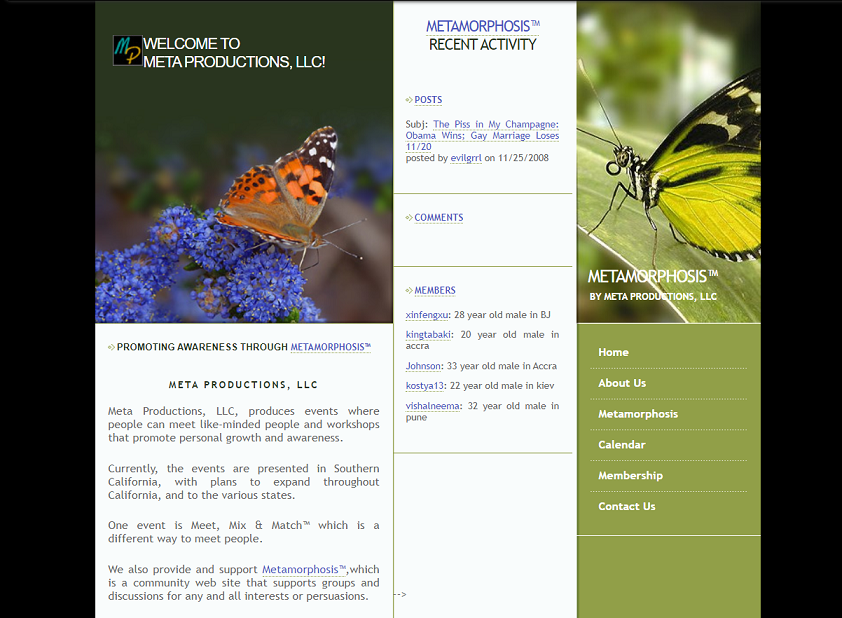Update Notice 26th January 2024: We’ve refreshed this article with the latest information and insights to ensure you’re getting the most current and relevant content.
When you think about a domain name, what is the first word that pops into your head? Some that come to mind are website, company, brand, .com (technically not a word, but you get the point), IP address, top-level domain, identity, and the internet, to name a few.
But what about the word “asset“? Probably not the obvious choice, but if we think about it, it should be in the top spots along with the others mentioned above. Here is why.
If an asset is an item of value that can generate a benefit or a profit, tangible or intangible, then domain names are assets. They have a value from their inception, even after they expire. Domain names can be transferred, reactivated, redirected, repurposed, and repeat their life cycle, while simultaneously accruing reputation, memory value, and authority.
Using this graphic from ICANN, let’s take a deeper look at the life cycle of domain names and assess the value of domain names as business assets.

Availability
This is the starting point when a domain name is not even registered. It exists, and depending on the word -or words- that composed it, it has a value that will probably not be as expensive -since many of the most coveted domains are already registered and/or active. Nevertheless, the possibilities of a domain name becoming extremely valuable at this stage are endless, depending on the strategy applied for its use during the activation stage.
Activation
A registrant has successfully pay for a domain name, which becomes active and can be leased from one and up to ten years (with renewal options after that period). For companies, this is the stage where they usually build up brands, set up websites, and with the right strategy, not only they can make their business succeed, their domain name will accumulate references, links, authority, and reputation, building up its value. Let’s not forget that sometimes domains are also bought and activated to be monetized and accumulate traffic, but they are not used, as their registrars have them as dormant assets because of the attractiveness or popularity represented by their names, waiting to be sold to the highest and right bidder.
Expiration
As the expiration date of a domain name approaches, registrars receive renewal notices to continue the use of the domain name. If no action is taken in 45 days, the domain is deactivated.
Redemption Grace Period
After the domain has been deactivated, the registrar has 30 additional days to recover it, paying the customary redemptions fees.
Pending Deletion
When the domain reaches this stage, it is impossible to recover it. After five days, the domain is deleted.
Released
After the deletion stage, the domain is finally released, and it’s once again available to be taken by the first person or company that completes the registration process. Once a domain is released, its life cycle starts again, going back to the availability stage, but with the significant difference that if it was a domain that belonged to a business and it was active, all the traffic, reputation, links, and references that accumulated through its active period leave a worthy digital footprint that confers and additional value to that expired domain.
Let’s check out some examples of the lives of some domain names using archive.org:
Cats.com
In the late 1990s, the domain Cats.com was under the ownership of a company called C•ATS Software Inc. Despite the premium domain name, the company’s focus was far from set on cats. C•ATS Software Inc. is involved in the development of software solutions that aim to “revolutionize global finance”, an area apparently unrelated to the whimsical world of cats.
In 2000, the domain led to MKIRisk, a new risk company formed following the acquisition of CATS Software Inc. by the UK software group Misys.
Fast forward to 2015, and Cats.com found itself with a new owner, Algis. Algis noticed something fascinating about the domain – every month, more than 15,000 curious individuals were typing “Cats.com” into their browsers, driven by nothing more than curiosity and, likely, a love for cats. This insight highlighted the domain’s inherent appeal and the potential it held to connect with a global audience of cat enthusiasts.
Today, Cats.com has found its true calling under the ownership of Cliverse Media, the rebrand of its flagship website, All About Cats. Whether it’s advice on feline care, behaviour, health, or product recommendations, Cats.com aims to be the go-to source for all things cat-related.
Meta.com
Registered in 1991, the first recorded snapshot of Meta.com by Archive.com dates back to November 10, 2005, displaying a simple message: “This website is under construction!
By the end of 2007, the domain had found a purpose, redirecting users to Meta Productions, LLC, a company hosting events and workshops designed for connecting individuals with shared interests and fostering personal development and awareness.

A significant change occurred in early 2017 when Meta.com began pointing to a scientific discovery platform known as Meta. The company was acquired by the Chan Zuckerberg Initiative, an organisation established and owned by Mark Zuckerberg and his wife, Priscilla Chan.

The most transformative moment for Meta.com came in 2021, when Mark Zuckerberg announced the rebrand of Facebook’s holding company to Meta. To solidify this new corporate identity, Meta Platforms, Inc. invested $60 million to secure the naming rights for “Meta” from Meta Financial Group.
Today, Meta.com serves as a direct portal to one of the largest and most valued companies in the world.

Homerun.com
According to the site data, the domain shows activity from September 1997.
A look into the year 2000 indicates that the domain redirected to a page named Realty Times, a website offering news and advice related to real estate.

In 2002, Homerun.com was a website used by users looking for baseball tickets and merchandise related to the MLB.

By 2004, the domain was parked and for sale.
In 2010, Homerun.com was a local business directory that offered users different deals, membership services, and rewards to enjoy products and services in the United States. In 2017, the domain was up for sale again.

A final look in 2018 shows that the domain was repurposed one more time. Currently, it is a real estate service platform to share, sell, and buy properties.

Zoom.com
The first beat of Zoom.com goes back to 1996 when it was a San Francisco Internet Service Provider providing consulting and software development services.

From 1999 until 2013, the domain belonged to Zoom Telephonics, a manufacturer of networking equipment.

By October 2018, the domain was acquired by Media Options who sold it to the now worldwide famous video conferencing service Zoom. The domain currently redirects to Zoom.us.

FB.com
Initially leased and used by the American Farm Bureau Federation since April 1997, the domain FB.com was acquired by Facebook in 2010 for $8.5 million, demonstrating the increasing value of short and memorable domain names.

It currently redirects to Facebook.com, while the domain FB.com is also used to host the company’s email system.

As we can see, domains not only can outlive businesses, products, and services. They can have new lives and purposes, bringing new value to existing or new brands.
A premium domain name is a valuable asset that can help your business stand out from the competition. Contact us today to learn more about premium domain names and how they can help your business succeed.
Other resources
branding business assets domain domain name domain names domains many lives of domain name naming

Previous Next